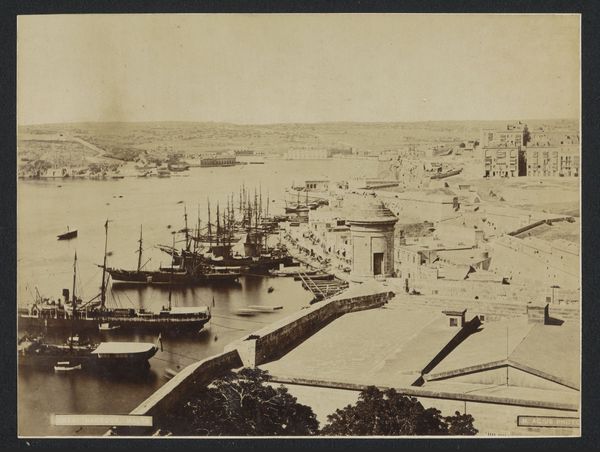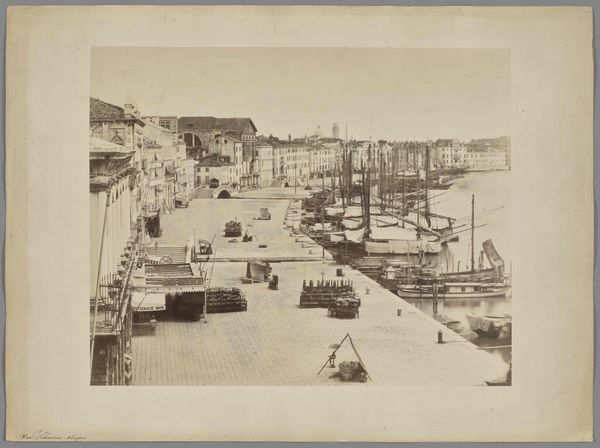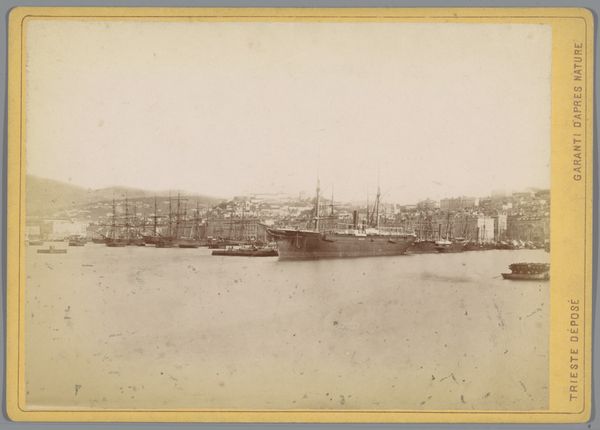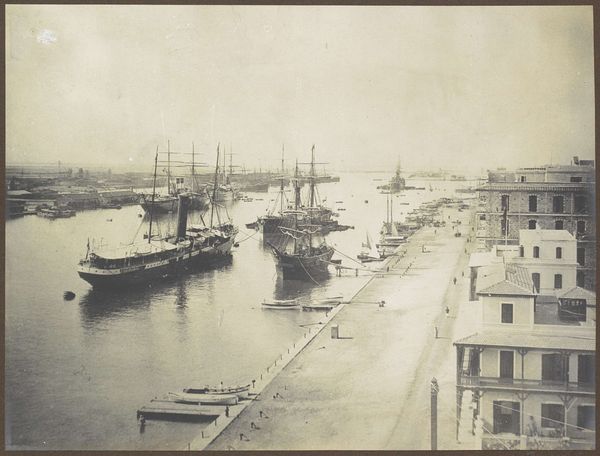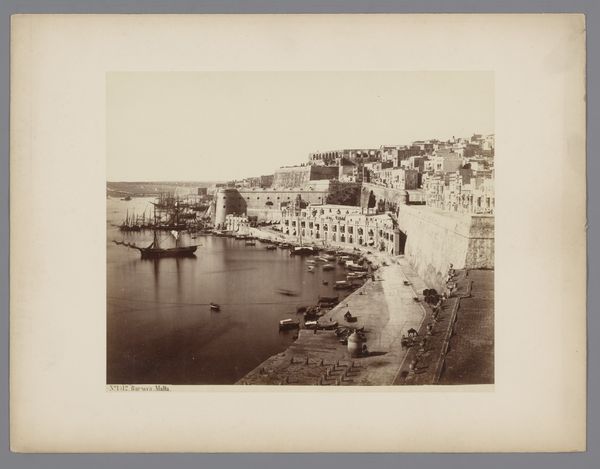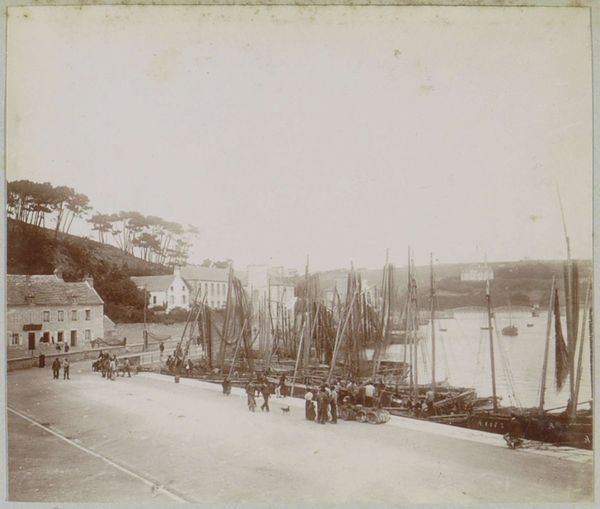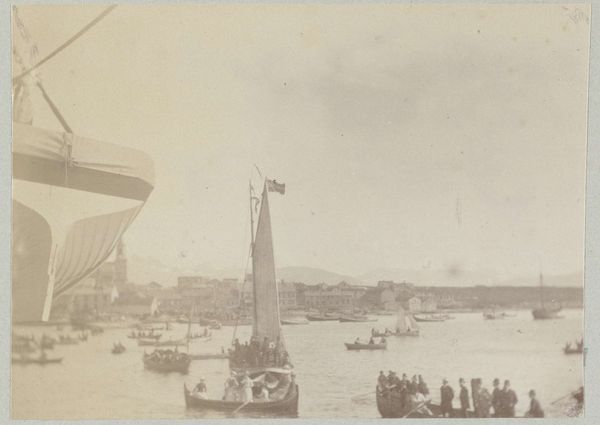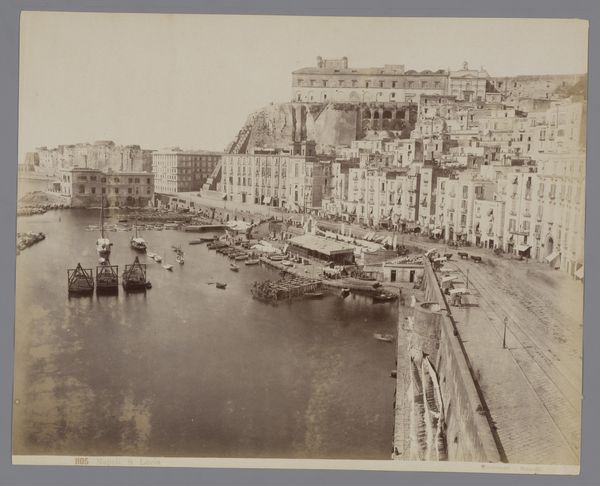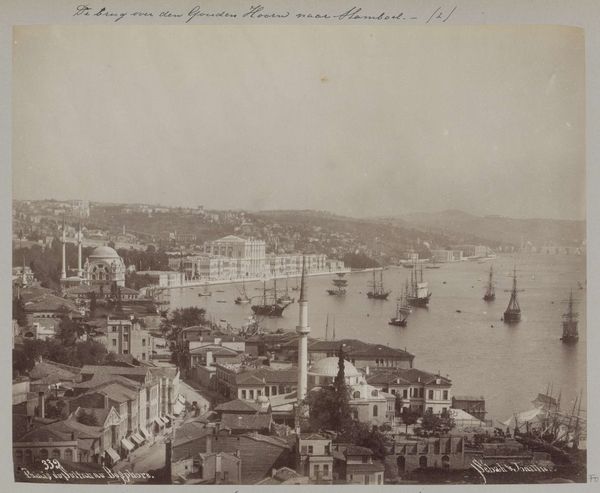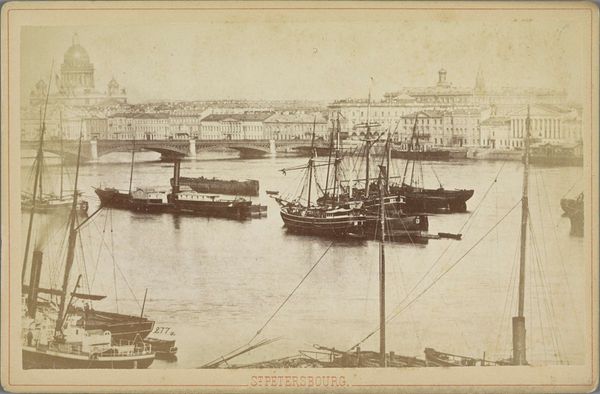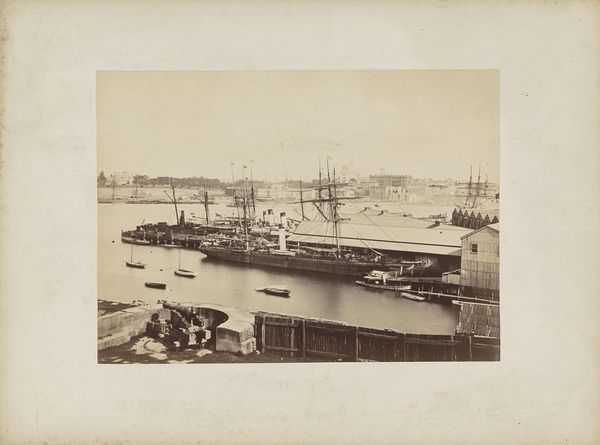
photography, albumen-print
#
pictorialism
#
landscape
#
photography
#
orientalism
#
cityscape
#
albumen-print
Dimensions: height 193 mm, width 257 mm
Copyright: Rijks Museum: Open Domain
Editor: So, here we have "Havengezicht in Malta," a photograph by Horatio Agius, dating somewhere between 1860 and 1910. It's an albumen print, a type of photography that was popular then. I’m immediately drawn to the way it captures everyday life around the harbor – laundry hanging out to dry contrasting with these huge, impressive ships. What kind of stories do you think this image tells about Malta's history? Curator: This image is fascinating when considered within the context of Maltese history under British rule. The presence of large sailing ships signals Malta's strategic importance as a naval base for the British Empire. Editor: I can definitely see that. The scale of the ships is striking. Curator: Exactly. Think about what these ships represent. They embody colonial power, trade, and military dominance. Now, consider the cityscape. What impression do you get from it? Editor: Well, it feels very lived-in, very ordinary. The architecture seems quite dense, and like I said, there's a lot of evidence of everyday life happening, almost oblivious to the grand ships nearby. Curator: Precisely. The photograph juxtaposes the quotidian with the grand narrative of empire. This kind of contrast was commonly used within the Orientalist movement. Can you notice any other pictorial or visual elements within this work that reinforce that? Editor: I guess, you have the clear divide between the lower vantage point showing daily domestic life with laundry and the wider shot focusing on ships and international commerce. Curator: Yes. Consider the public role of imagery during this period. What purpose do you think an image like this might have served? Editor: Possibly as a picturesque souvenir for visitors? A document of Malta's modernity under British influence perhaps? Curator: Exactly, both of those and maybe something else. Images like this also reinforced a certain vision of empire, and helped construct an image for internal consumption, meant to inspire both awe of and complicity to colonial endeavours. Editor: I see, it is very interesting how an seemingly innocuous photography can become an element in a global network. Thanks, that makes me see this in a new way.
Comments
No comments
Be the first to comment and join the conversation on the ultimate creative platform.
